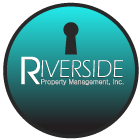When a tenant moves out of a rental property, a landlord may choose to charge the tenant for various expenses related to the move-out process. However, it is important for landlords to understand the rules and regulations surrounding move-out charges, as not all charges are allowed in every state.
Some of the common charges that a landlord may charge a tenant for include:
Unpaid rent: If the tenant has not paid all the rent that was due during their tenancy, the landlord may charge them for the unpaid amount.
Cleaning fees: If the tenant left the property in a condition that requires cleaning beyond normal wear and tear, the landlord may charge the tenant a cleaning fee.
Repairs: If the tenant caused damage to the property that needs to be repaired, the landlord may charge the tenant for the cost of repairs.
Carpet cleaning: If the tenant's pets caused damage to the carpeting, or if the carpeting is dirty beyond normal wear and tear, the landlord may charge the tenant for carpet cleaning.
Key replacement: If the tenant lost their keys or left them in the property, the landlord may charge the tenant for the cost of replacing the locks.
Late fees: If the tenant was late paying rent, the landlord may charge them a late fee. This fee should be specified in the lease agreement.
Paint or wallpaper: If the tenant painted the walls or installed wallpaper without the landlord's permission, the landlord may charge the tenant for the cost of restoring the walls to their original condition.
It is important for landlords to understand their state's laws and regulations when it comes to move-out charges. Some states have strict rules about what landlords can and cannot charge tenants for, and landlords who violate these rules may face penalties.
To avoid disputes, it is best for landlords to provide the tenant with a written list of move-out charges, along with documentation supporting the charges. This documentation should include receipts, invoices, or other evidence of the expenses incurred by the landlord.
When making deductions from the security deposit, landlords should also be careful to only charge the tenant for expenses that are directly related to the tenant's use of the property. They cannot make deductions for normal wear and tear.
Normal wear and tear refers to the gradual depreciation of a rental property due to everyday use over time, and it is considered acceptable and not the responsibility of the tenant to repair or replace. As a landlord, it is important to understand the difference between normal wear and tear and damages caused by the tenant. Examples of normal wear and tear include faded or worn carpet, scratched or dented walls, worn or faded paint, and worn or faded appliances.
In conclusion, landlords may charge tenants for various expenses when they move out, but it is important for them to understand the rules and regulations surrounding move-out charges. By providing the tenant with a written list of charges and supporting documentation, landlords can avoid disputes and ensure a smooth transition for both parties.











